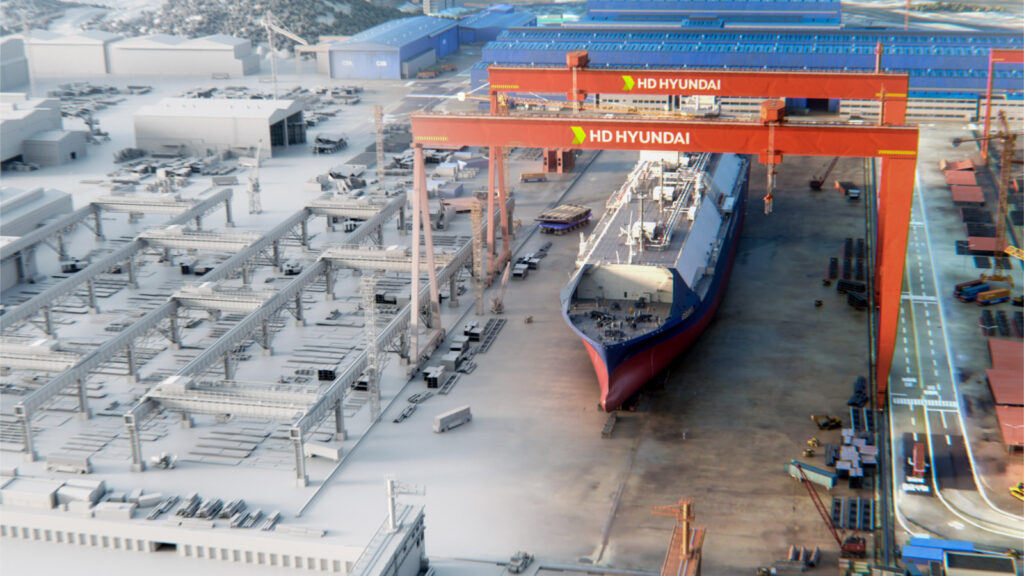Ansys, Cadence, Hexagon, Microsoft, Siemens, Trimble and others adopt Omniverse Technologies to help customers design, simulate, build and operate physically based ‘digital twins’.
Nvidia is making its Omniverse Cloud industrial digital twin platform available as a series of five application programming interfaces (APIs) to make it easier for software developers to integrate core Omniverse technologies for OpenUSD and RTX into their existing design and automation software applications.
According to Rev Lebaredian, VP of Omniverse and simulation technology at Nvidia, this gives ISVs all the powers of Omniverse: interoperability across tools, physically based real time rendering, and the ability to collaborate across users and devices.
In its simplest form, software developers can embed Omniverse powered viewports into their 3D apps, giving their apps ‘instant’ real-time physically based rendering – pixel streaming from the cloud. Software developers can also use the API to connect Generative AI tools into their existing apps, as well as a range of workflow tools for OpenUSD data.
The Omniverse Cloud APIs are being adopted by several software developers including Ansys, Cadence, Dassault Systèmes, Hexagon, Microsoft, Rockwell Automation, Siemens, and Trimble to help customers design, simulate, build and operate physically based digital twins.
The five new Omniverse Cloud APIs can be used individually or collectively. USD Render can be used to generate fully ray-traced RTX renders of OpenUSD data; USD Write lets users modify and interact with OpenUSD data; USD Query enables scene queries and interactive scenarios; USD Notify tracks USD changes and provides updates; and Omniverse Channel connects users, tools and worlds to enable collaboration across scenes.
Siemens is adopting Omniverse Cloud APIs within its Siemens Xcelerator Platform. The company is starting with Teamcenter X, to give its cloud-based product lifecycle management (PLM) software the ability to connect design data to Nvidia generative AI APIs, and use Omniverse RTX rendering directly inside the app. It will extend to other Siemens Xcelerator tools, including high-end CAD/CAM/CAE software, Siemens NX, and Computational Fluid Dynamics (CFD) software STAR-CCM+.
“Through the Nvidia Omniverse API, Siemens empowers customers with generative AI to make their physics-based digital twins even more immersive,” said Roland Busch, president and CEO of Siemens AG. “This will help everybody to design, build and test next-generation products, manufacturing processes and factories virtually before they are built in the physical world.”
According to Nvidia, through the use of Omniverse APIs, workflows such as applying materials, lighting environments and other supporting scenery assets in physically based renderings will be ‘dramatically accelerated using generative AI.
AI integrations will also allow engineering data to be contextualised as it would appear in the real world, allowing other stakeholders — from sales and marketing teams to decision-makers and customers — to benefit from deeper insight and understanding of real-world product appearance.
Siemens is creating a real-time, embedded, photoreal viewport powered by the USD Render and USD Write APIs, to allow engineers to interactively navigate, edit and iterate on a shared model of their live data.
The USD Query API lets Teamcenter X users navigate and interact with physically accurate scenes, while the USD Notify API automatically provides real-time design and scene updates. To facilitate cloud-based collaboration and data exchange, Teamcenter X will leverage the Omniverse Channel API to establish a secure connection between multiple users across devices.
Meanwhile, Ansys is adopting Omniverse Cloud APIs to enable data interoperability and RTX visualisation in solutions such as Ansys AVxcelerate for autonomous vehicles, Ansys Perceive EM for 6G simulation, and Nvidia accelerated solvers such as Ansys Fluent.
Cadence is adopting Omniverse Cloud APIs into its Cadence Reality Digital Twin Platform so enterprises can design, simulate, and optimise data centres in a digital twin prior to physical build-out.
Hexagon, a specialist in reality technology, will integrate its reality capture sensors and digital reality platforms with the Nvidia Omniverse Cloud APIs through USD interoperability to provide its customers with ‘hyper-realistic simulation and visualization capabilities’.
Construction and geospatial technology specialist Trimble will use the APIs to provide interactive Nvidia Omniverse RTX viewers with Trimble model data.
Omniverse Cloud APIs will be offered later this year on Microsoft Azure as self-hosted APIs on Nvidia A10 GPUs or as managed services deployed on Nvidia OVX.
Main image caption: HD Hyundai, a leader in sustainable ship manufacturing, is able to unify and visualise complex engineering projects directly within Teamcenter X using Omniverse Cloud APIs






